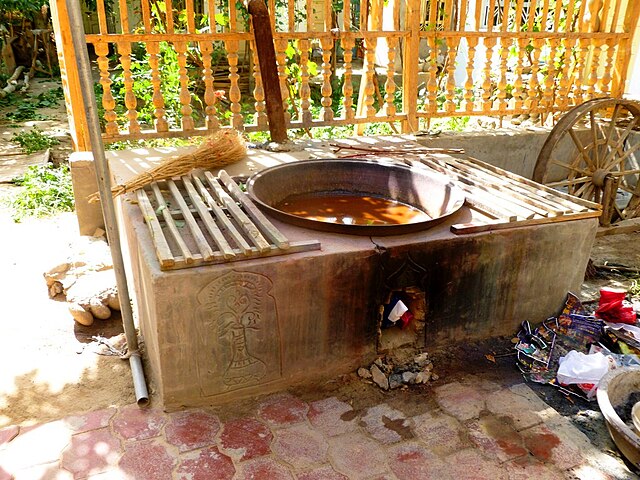Resist dyeing (resist-dyeing) is a traditional method of dyeing textiles with patterns. Methods are used to "resist" or prevent the dye from reaching all the cloth, thereby creating a pattern and ground. The most common forms use wax, some type of paste made from starch or mud, or a mechanical resist that manipulates the cloth such as tying or stitching. Another form of resist involves using a dye containing a chemical agent that will repel another type of dye printed over the top. The best-known varieties today include tie-dye, batik, and ikat.
A nembok process in batik-making method especially for batik tulis (handmade batik).
Batik, created using the technique of wax-resist dyeing originated from Indonesia.
Rōketsuzome printing wheels at Roketsuzome Yamamoto, Kyoto.
A mix of modern and traditional Ukrainian pysanky
Dyeing is the application of dyes or pigments on textile materials such as fibers, yarns, and fabrics with the goal of achieving color with desired color fastness. Dyeing is normally done in a special solution containing dyes and particular chemical material. Dye molecules are fixed to the fiber by absorption, diffusion, or bonding with temperature and time being key controlling factors. The bond between the dye molecule and fiber may be strong or weak, depending on the dye used. Dyeing and printing are different applications; in printing, color is applied to a localized area with desired patterns. In dyeing, it is applied to the entire textile.
Dyeing
Pigments for sale at a market in Goa, India
Cotton being dyed manually in contemporary India
Silk dye in pan on stove. Khotan








